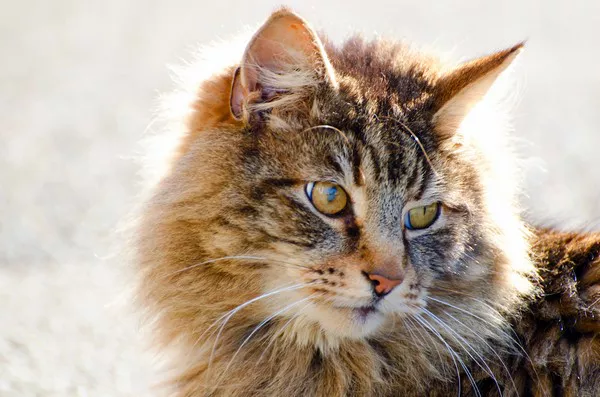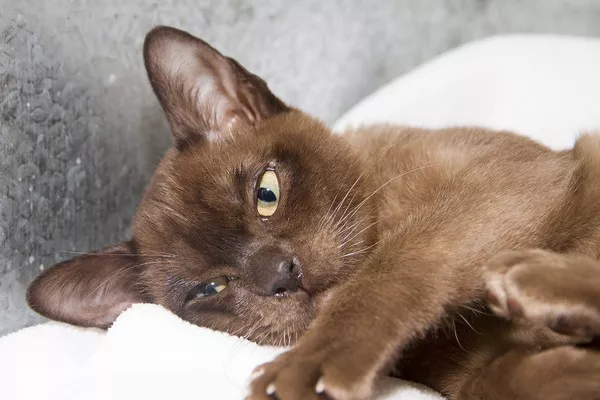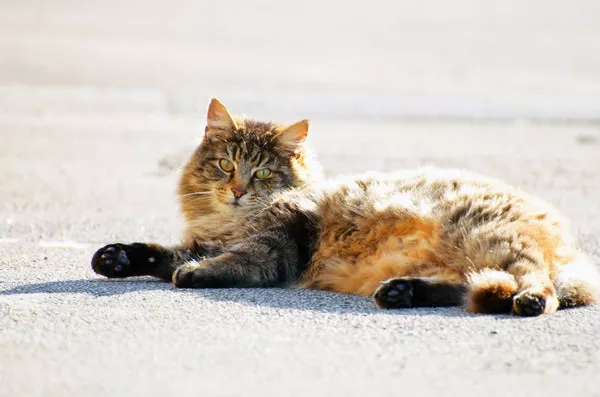Chartreux cats, known for their striking blue-gray coats and affectionate personalities, are beloved companions for many cat lovers. However, one common concern among prospective owners is whether Chartreux cats can be left alone during the day without experiencing distress or boredom. In this comprehensive article, we’ll explore the unique characteristics of Chartreux cats, their ability to cope with alone time, and provide training tips to help them thrive when left alone.
Understanding Chartreux Cats
Chartreux cats are a distinct breed with a rich history dating back centuries. Originating in France, these cats are renowned for their sweet temperament, intelligence, and adaptability. Chartreux cats are typically medium to large in size, with muscular bodies, round faces, and expressive eyes that range in color from gold to copper.
Temperament and Personality
Chartreux cats are known for their calm and gentle demeanor, making them excellent companions for families, singles, and seniors alike. They are affectionate and loyal towards their human family members, often forming strong bonds with their caregivers. Chartreux cats are also known for their playful and curious nature, enjoying interactive play sessions and exploring their surroundings.
Socialization and Interaction Needs
While Chartreux cats are generally independent by nature, they still require socialization and interaction to thrive. They enjoy spending time with their human companions, whether it’s lounging on the couch, playing with toys, or receiving affectionate pets and cuddles. Chartreux cats may become lonely or anxious if left alone for extended periods, making it important to provide them with mental stimulation and companionship.
Can Chartreux Cats Be Left Alone During the Day?
Chartreux cats are capable of being left alone during the day, provided their basic needs are met and they have sufficient mental and physical stimulation. However, it’s essential to consider each cat’s individual temperament, age, and personality when determining their ability to cope with alone time. Here are some factors to consider:
Age: Kittens and young Chartreux cats may require more supervision and interaction than adult cats. They have higher energy levels and may become bored or restless if left alone for too long. Gradually increasing alone time and providing plenty of toys and activities can help young Chartreux cats adjust to being alone during the day.
Health: Cats with medical conditions or special needs may require additional care and attention, especially if they need medication or monitoring throughout the day. It’s important to discuss your cat’s specific needs with your veterinarian and ensure they have access to necessary resources and support.
Environment: The living environment plays a significant role in a Chartreux cat‘s ability to cope with alone time. Providing a stimulating and enriching environment with toys, scratching posts, perches, and hiding spots can help prevent boredom and encourage independent play and exploration.
Companionship: If possible, consider adopting a second cat to provide companionship for your Chartreux cat while you’re away. Cats are social animals and often enjoy the company of other feline companions. However, it’s essential to introduce new cats gradually and ensure they get along before leaving them alone together.
Training Tips for Leaving Chartreux Cats Alone
While Chartreux cats are independent by nature, there are several training tips and strategies you can employ to help them adjust to being alone during the day:
Gradual Acclimation: Start by gradually acclimating your Chartreux cat to alone time by leaving them alone for short periods and gradually increasing the duration over time. This will help prevent separation anxiety and build their confidence in being alone.
Interactive Toys: Provide interactive toys and puzzle feeders to keep your Chartreux cat mentally stimulated and engaged while you’re away. Toys that dispense treats or require problem-solving skills can help alleviate boredom and provide enrichment.
Environmental Enrichment: Create an enriching environment with plenty of vertical space, hiding spots, and opportunities for exploration. Consider installing window perches or bird feeders outside windows to provide entertainment and stimulation for your cat.
Scent Comfort: Leave an article of clothing or a blanket with your scent near your cat’s sleeping area to provide comfort and reassurance while you’re away. Your scent can help reduce anxiety and make your cat feel more secure in your absence.
Routine and Consistency: Establish a consistent routine for feeding, playtime, and alone time to help your Chartreux cat feel secure and predictable. Cats thrive on routine and may feel more at ease when they know what to expect each day.
Positive Reinforcement: Use positive reinforcement techniques, such as treats, praise, and affection, to reward your Chartreux cat for calm and independent behavior when left alone. This will help reinforce positive associations with alone time and encourage desirable behaviors.
Conclusion
Chartreux cats are independent and adaptable companions that can be left alone during the day with proper preparation and training. By considering their individual needs, providing a stimulating environment, and employing training tips to promote independence, you can help your Chartreux cat thrive while you’re away. With love, patience, and understanding, you can ensure that your Chartreux cat remains happy, healthy, and content whether you’re at home or away.




















